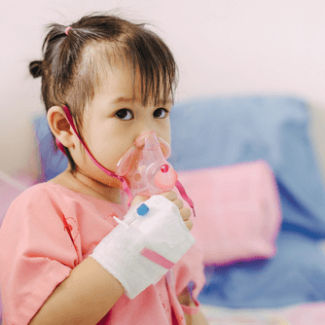Pneumonia is an infection that affects the lungs and can range from mild to severe. It is more commonly observed in children under the age of 5.
Causes of pneumonia in children can be attributed to bacteria or viruses. Some of the common culprits include Streptococcus pneumoniae, Mycoplasma pneumonia (causing walking pneumonia), Group B streptococcus, Staphylococcus aureus, Respiratory syncytial virus (RSV) prevalent in children under 5, Parainfluenza virus, Influenza virus, and Adenovirus. In some cases, pneumonia may be caused by fungi.
Certain factors increase a child's risk of developing pneumonia, such as a weakened immune system (e.g., due to cancer), ongoing chronic health conditions like asthma or cystic fibrosis, and lung or airway problems. Additionally, infants under 1 year old exposed to secondhand tobacco smoke, especially if their mother smokes, are at an increased risk.
Symptoms of pneumonia in children may vary but can include a cough producing mucus, painful coughing, vomiting or diarrhoea, loss of appetite, fatigue, fever, chills, rapid or difficult breathing, headache, and fussiness. Viral pneumonia may exhibit similar early symptoms as bacterial pneumonia, but with gradual onset, accompanied by wheezing and worsening cough. Viral pneumonia can also predispose a child to bacterial pneumonia.

Diagnosing pneumonia in children typically involves a comprehensive health history review and physical examination by a healthcare provider. They may employ certain tests to confirm the diagnosis, such as a chest X-ray to visualise internal structures, blood tests including a blood count to detect signs of infection and an arterial blood gas test to assess oxygen and carbon dioxide levels in the blood. Sputum culture, which examines mucus coughed up from the lungs, can determine the presence of an infection, but it is challenging to obtain samples from children and is not routinely performed. Pulse oximetry measures blood oxygen levels using a small sensor on a finger or toe. In rare cases, a chest CT scan or bronchoscopy (to visualise the airways) may be conducted. If there is fluid collection in the pleural space, a pleural fluid culture can help identify the bacteria causing the infection.
Treatment for pneumonia in children usually involves antibiotics for bacterial pneumonia, as viral pneumonias generally resolve on their own without specific treatment. However, antiviral medications may be administered in cases of flu-related pneumonia. To alleviate symptoms, it is recommended to ensure the child gets ample rest, stays well-hydrated by increasing fluid intake, employs a
cool mist humidifier in their room, takes acetaminophen to manage fever and discomfort, and utilises cough medicine as appropriate. Pneumonia is an infection that affects the lungs and can range from mild to severe. It is more commonly observed in children under the age of 5.